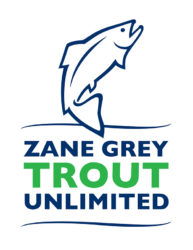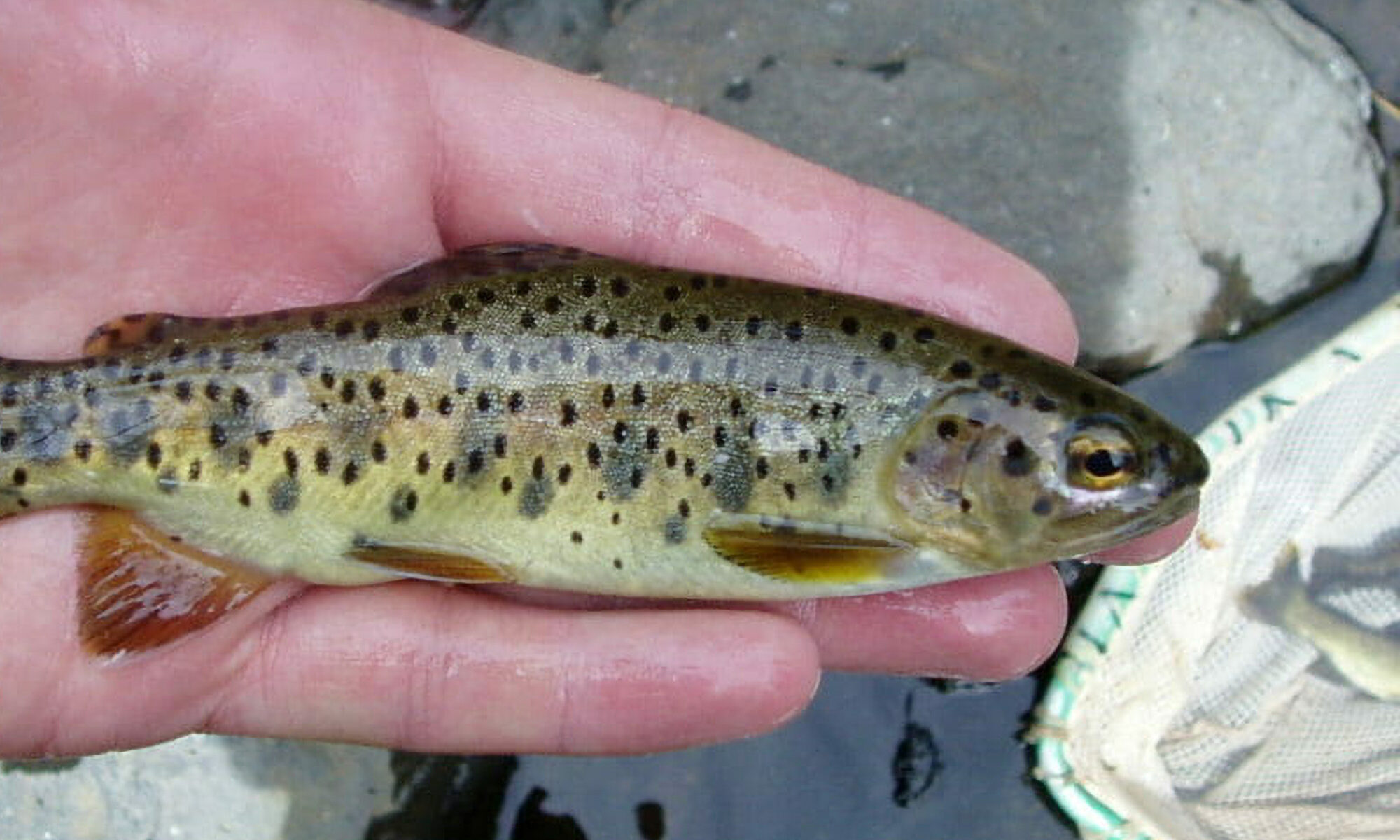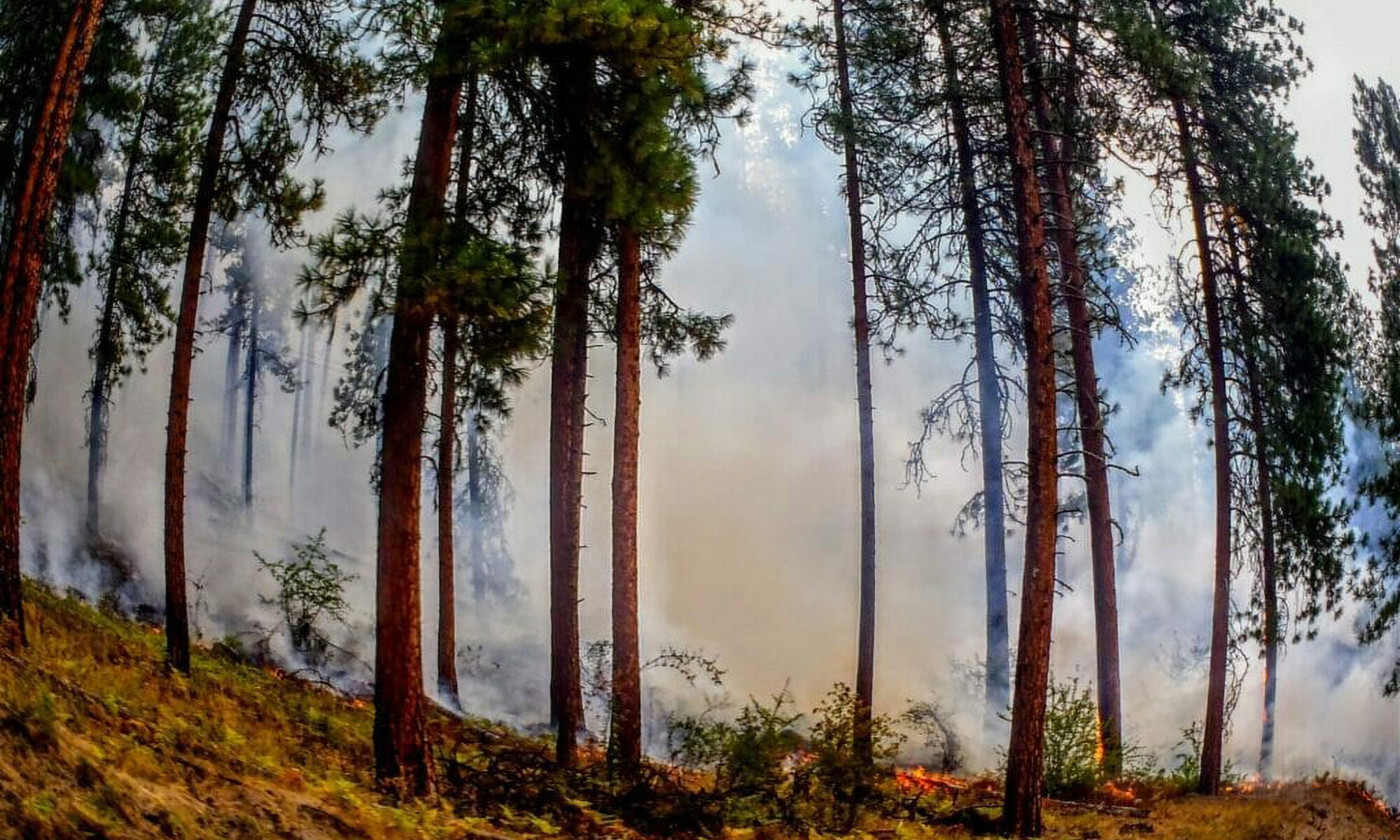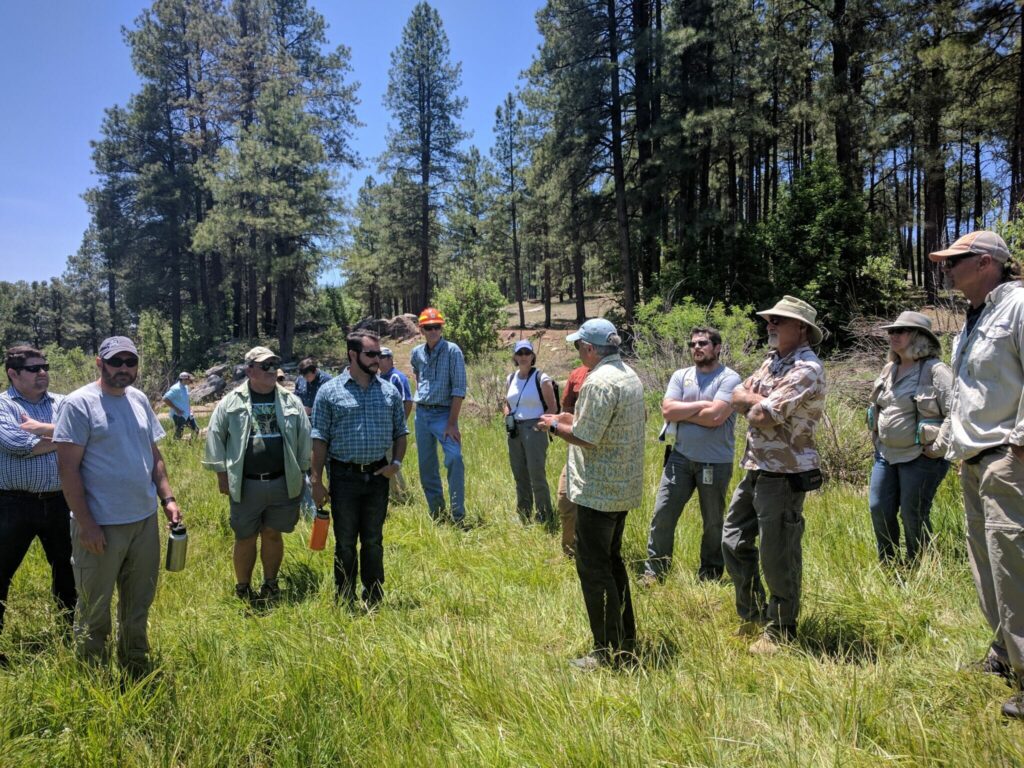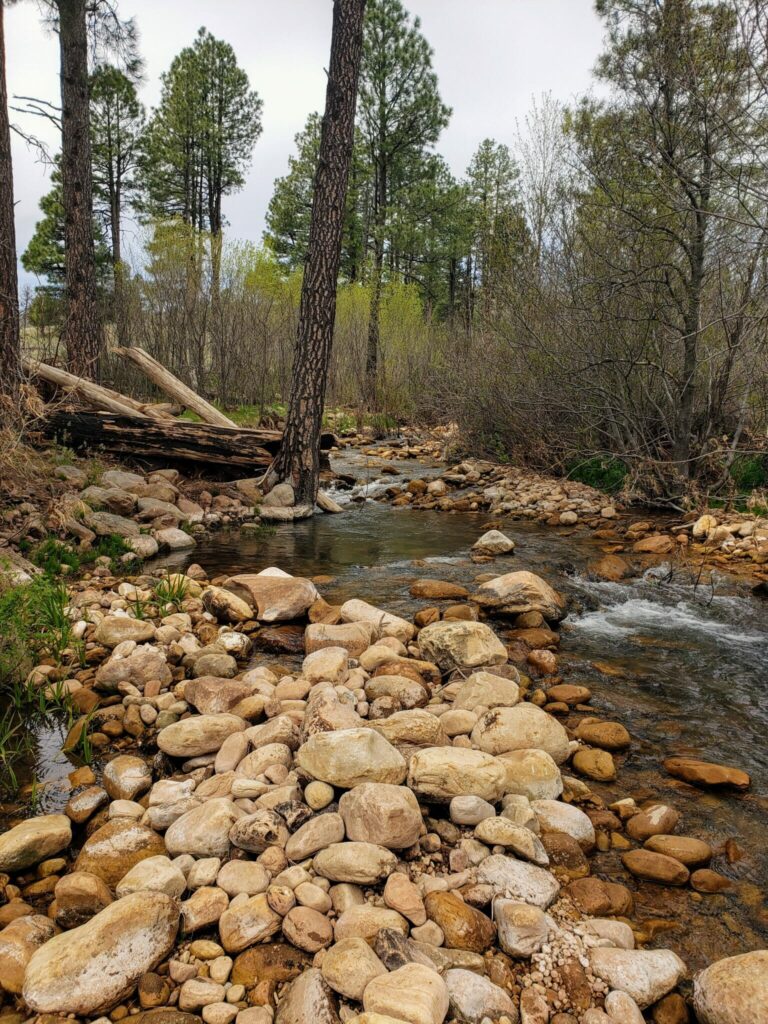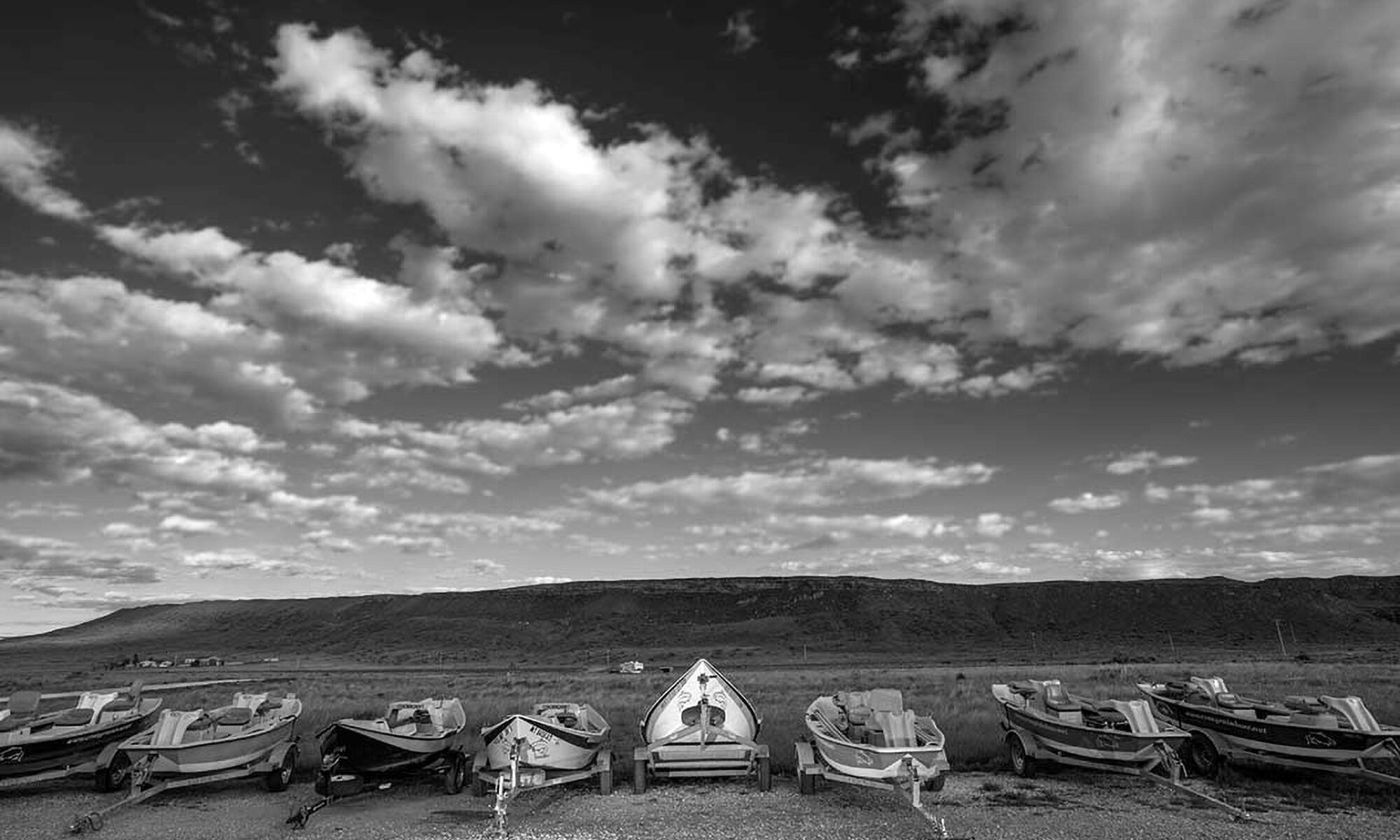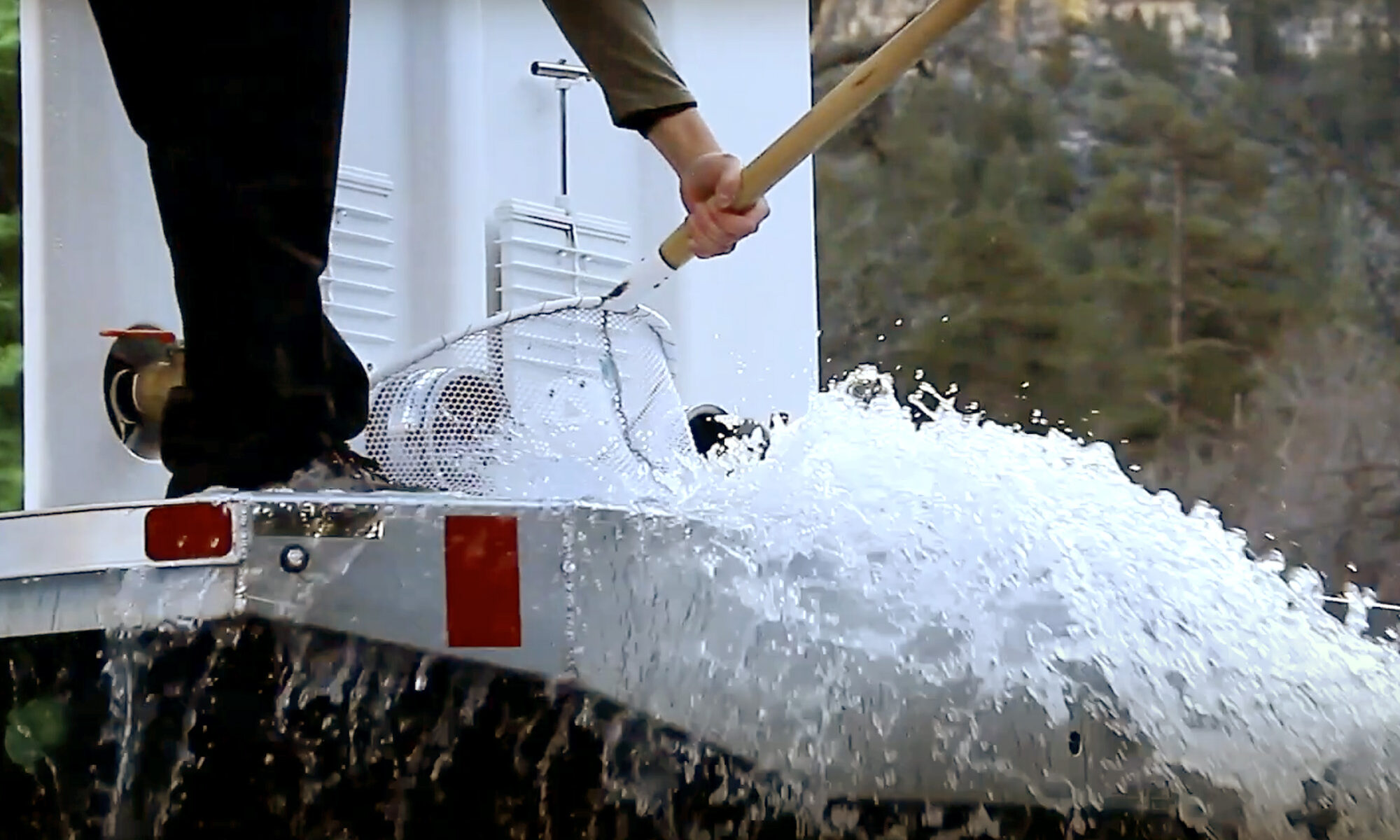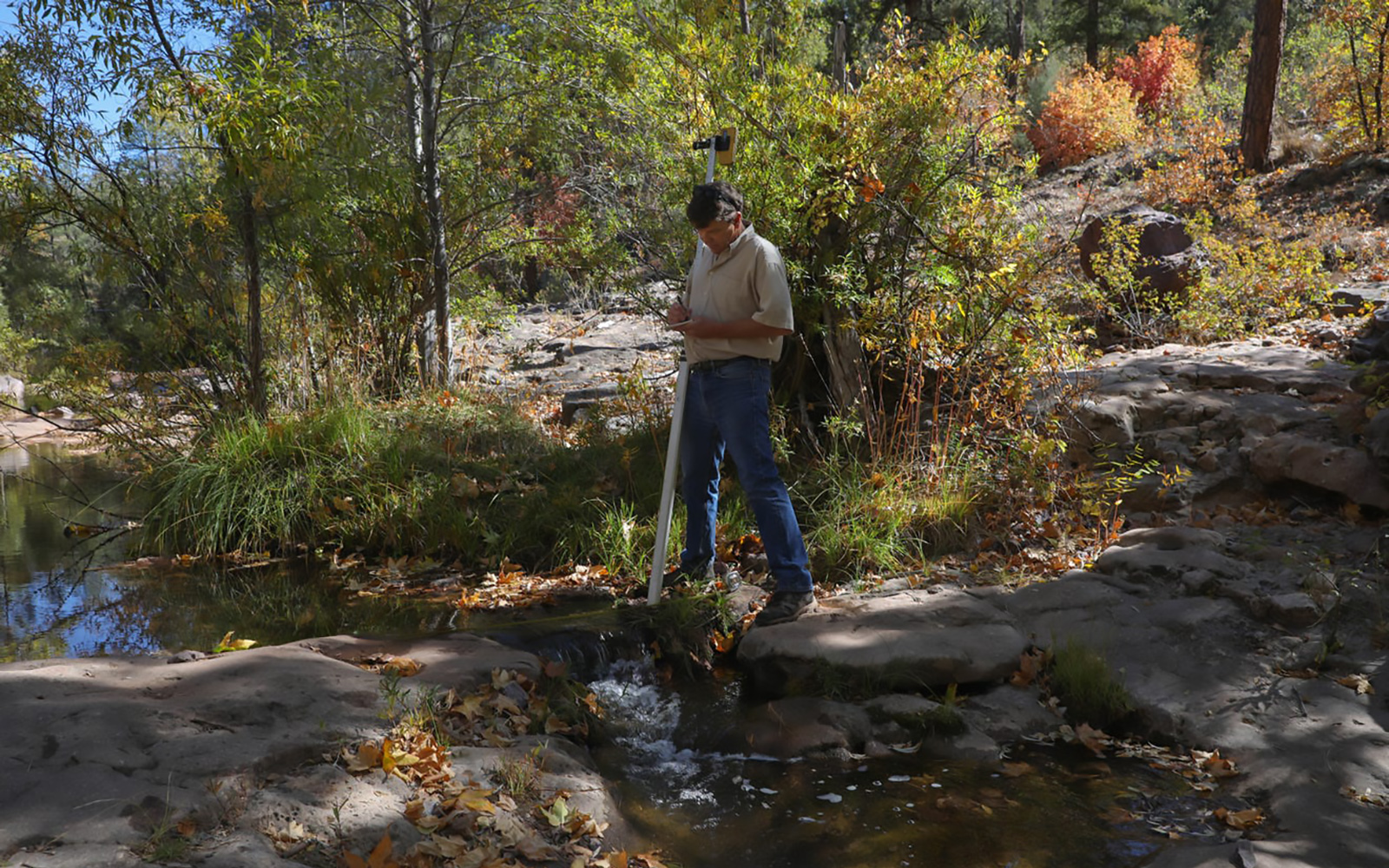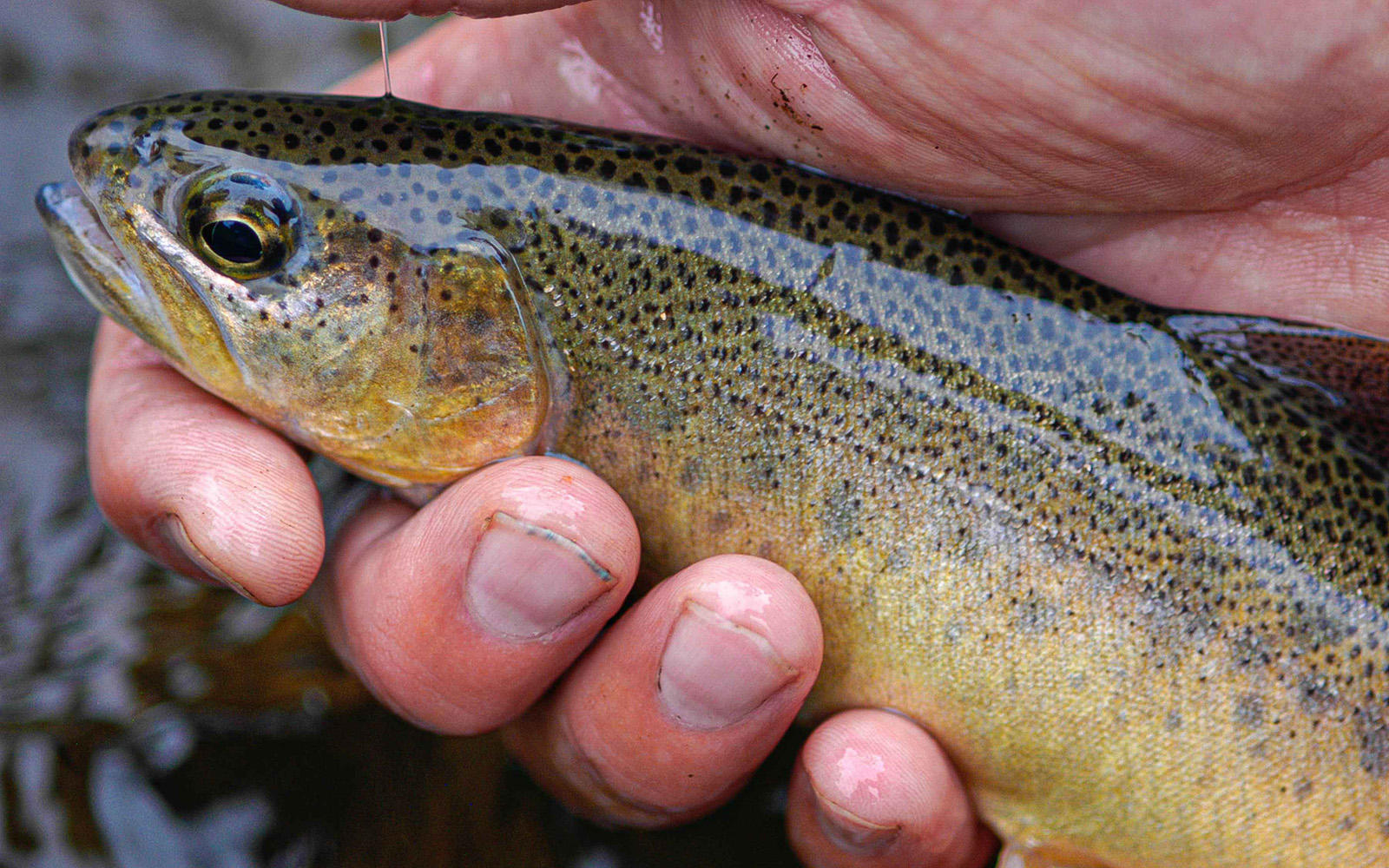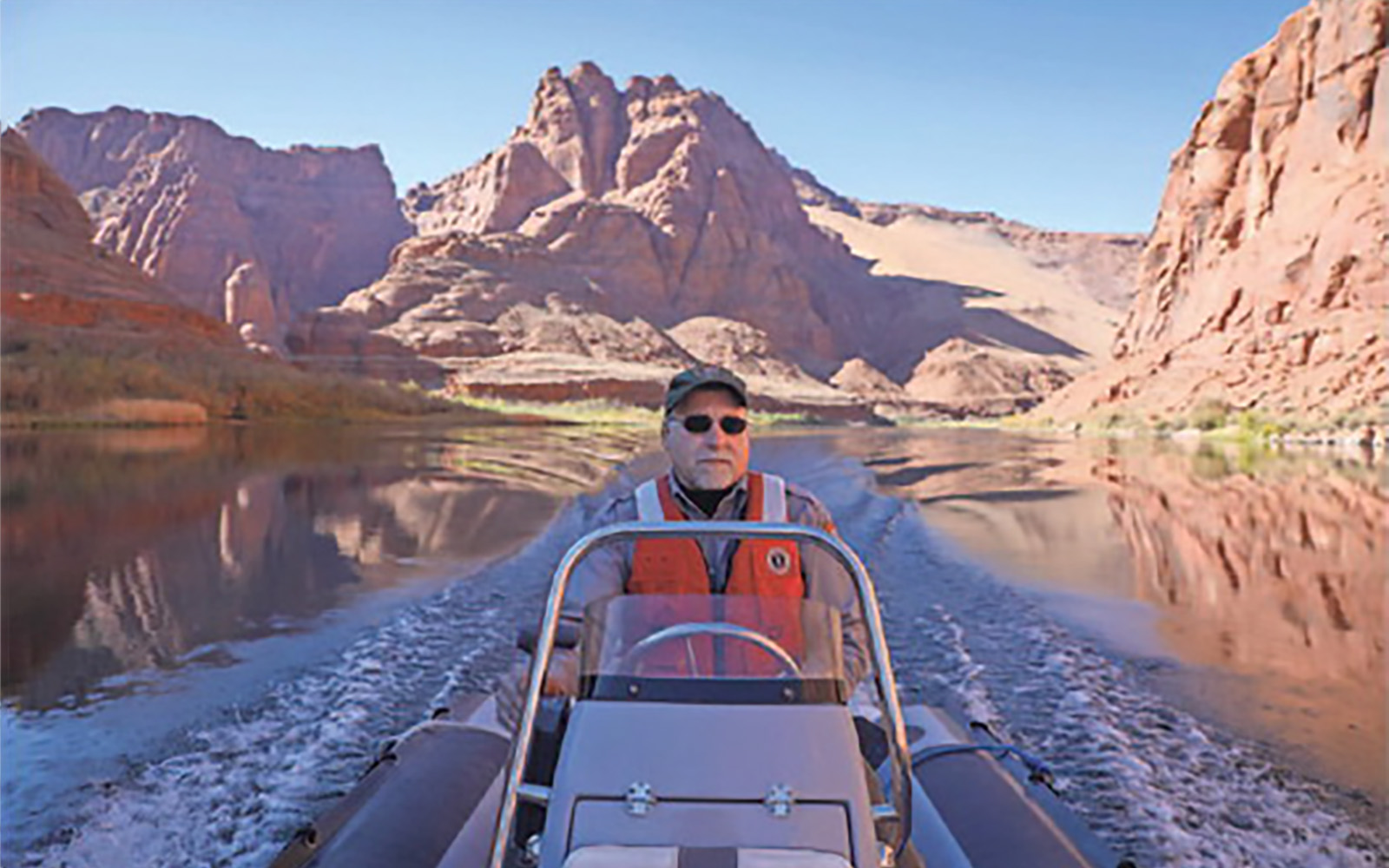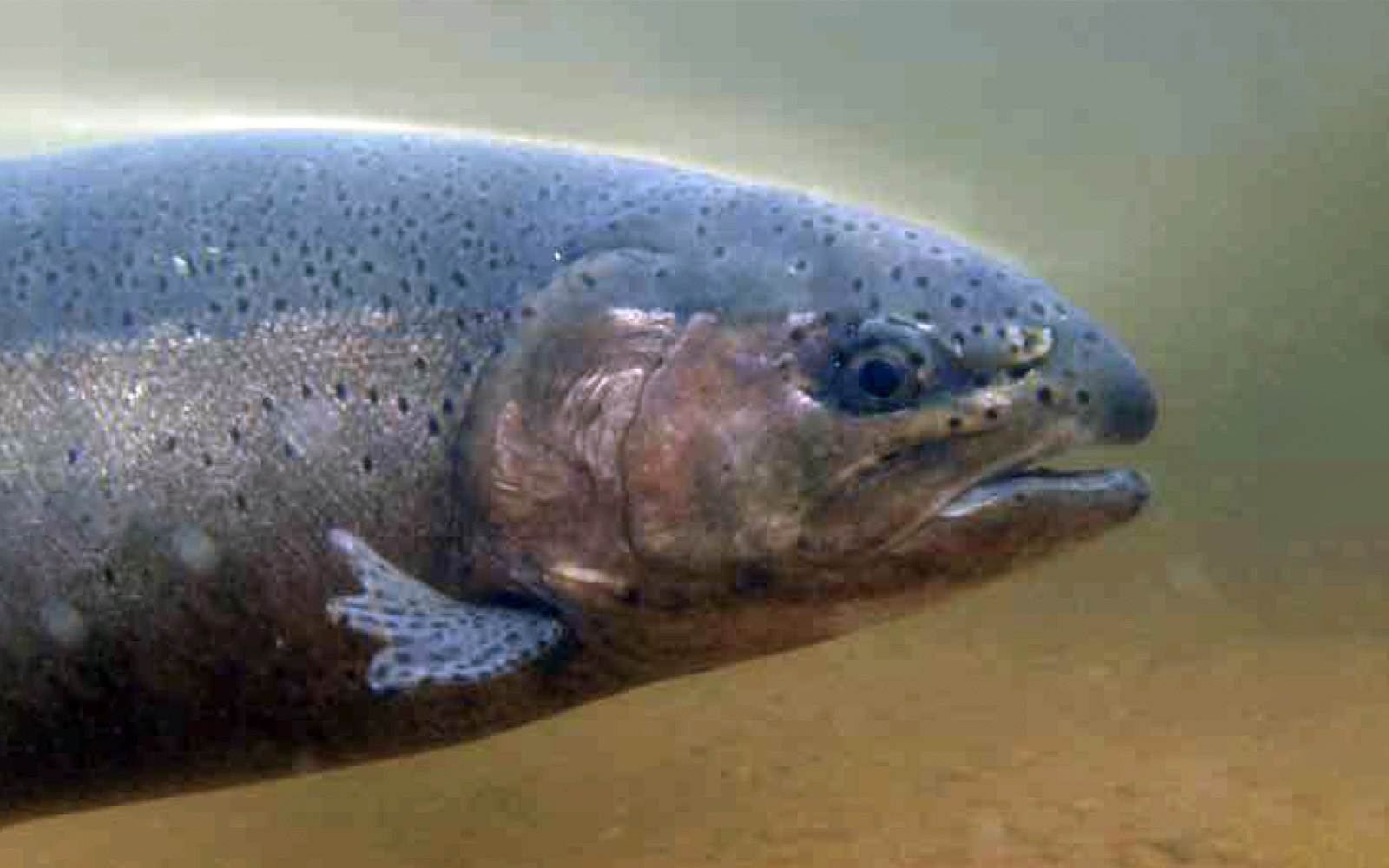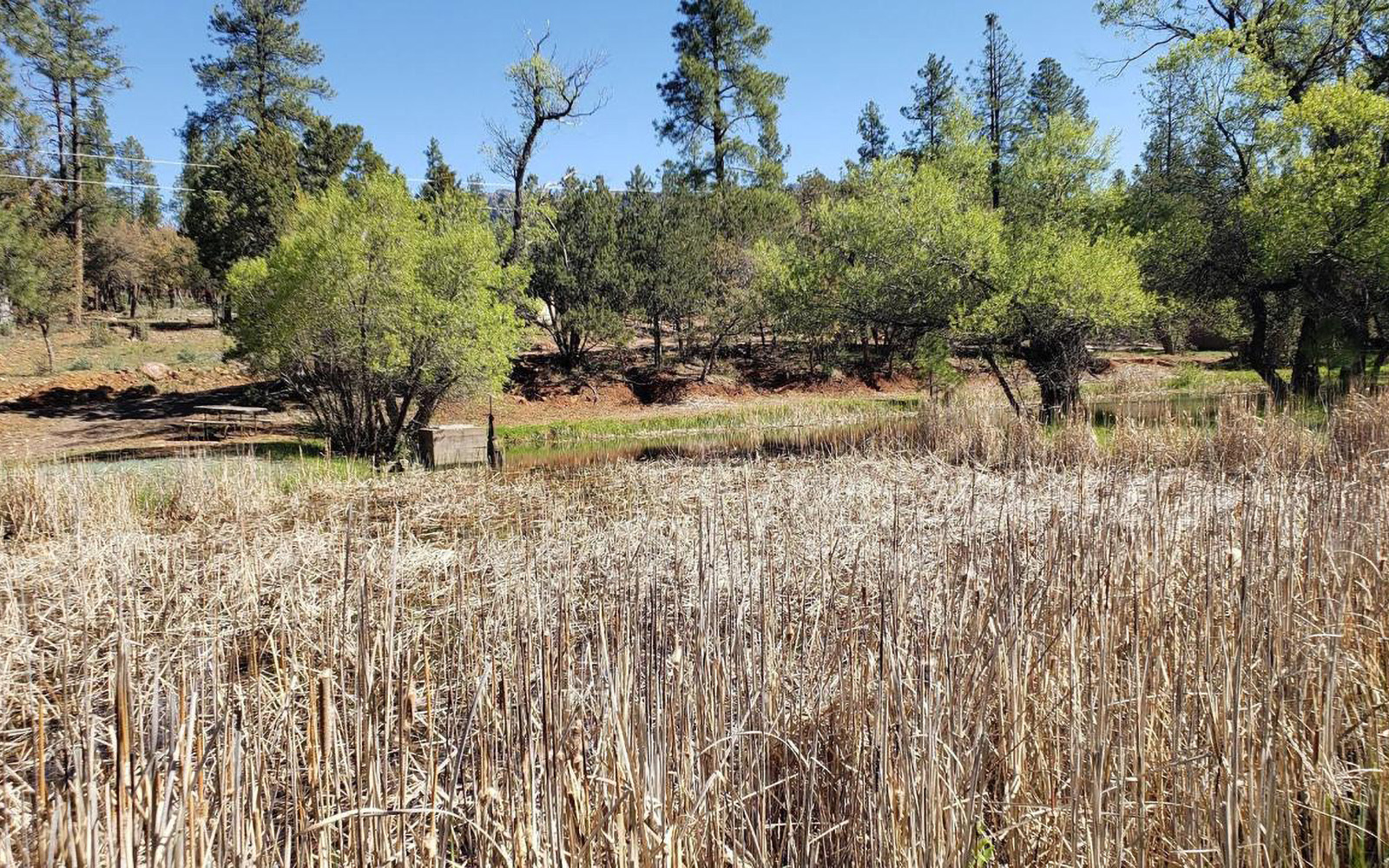LEES FERRY — The reflection of the red rocks made it tough to tell where the water ended and the cliffs began as Barron Tsinigine cast his line into the river. It was daybreak and he had been fishing for rainbow trout, until he found out he could earn $25 for landing a brown trout.
That’s when his plan changed.
“I’m in the same boat as everyone else right now. I’m unemployed and it’d be nice to make a little bit of cash, as well as get a meal,” Tsinigine said. “I’ll be out here fishing either way, at least now I can get paid for it.”
Tsinigine was one of the first anglers to participate in Arizona’s incentivized harvest of brown trout. Wildlife agencies are funding the pilot program to cull the brown trout population in the Colorado River, in the hopes of keeping the predacious trout from moving downstream and endangering native fish, like the humpback chub.
Anglers can catch a $25 check for every brown trout harvested, as long as it is at least six inches in length. To receive the reward, the brown trout must have been caught legally in the Colorado River, in the roughly 15-mile stretch between the Glen Canyon Dam and the Paria River inflow.
There is a newly established station at the Lees Ferry boat ramp where anglers can clean the trout and fill out data cards. They must also deposit the fish head and entrails at a collection station outside the Navajo Bridge Interpretive Center.
“The only extra step for me is filling out a card and I want to do that because how else are they going to know where to send my check,” Tisingine said, with a grin. “I drive by the center no matter what. This is as simple as it can be. My wife will be thrilled.”
By incentivizing anglers like Tsinigine, the National Park Service and the Arizona Game and Fish Department are hoping to avoid the use of more aggressive management tactics — like disrupting spawn beds or electro-fishing — to diminish the population of brown trout.
“It is unfortunate that such a coveted sports fish, like brown trout, lives in an area that is incompatible with our native fish management plan,” said Scott Rogers, an aquatic wildlife program manager for the Game and Fish Department. “But we’re not trying to remove every brown trout, just enough to mitigate the risk of them moving downstream.”
Program to thin fish population
This is one of the first such harvests in Arizona. It will run for the next three to four years, at which time wildlife agencies will reassess the trout population.
The brown trout, known for its olivebrown scales and its ability to evade capture, is a fish-eating predator that was introduced to the state in the 1930s.
“As brown trout become adults, they feed almost exclusively on other fish and they have a voracious appetite,” said Ken Hyde, chief of science and resource management for the park service at the Glen Canyon National Recreation Area. “Our real worry is that they move downstream and start eating native fish that are considered endangered or threatened.”
Generally, fish only move downstream when they run out of space or food. According to Hyde, monitoring data from the Game and Fish Department has shown a dramatic increase of brown trout over the last six years.
“As a fish-eating fish, having them in the same system as endangered or threatened native fish can be problematic if we don’t manage it closely, which is why we’re trying this incentivized program,” Rogers said. “This is an experiment, but we’re hopeful that it will be successful.”
If at the end of the pilot program the harvest is considered unsuccessful, the two agencies will turn to more aggressive mechanical removal tactics.
“We’re asking the public to pitch in because we need their help to avoid taking more drastic steps,” said Jeff Arnold, a fish biologist for the park service at the Glen Canyon National Recreation Area. “Mechanical removal is more expensive and much less popular among native tribes and angler groups because they think it will have a negative impact on the rest of the fishery.”
Mechanical removals include the disruption of spawning beds and electro- fishing.
“An incentivized harvest is the least intrusive type of management, which is why we are starting with that,” Rogers said. “By communicating with anglers, we’re hoping to convince them to partake in this program so that we can avoid any other invasive and aggressive means of mitigating the brown trout problem.”
The first time Jim Strogen went fishing was when he was 3 years old, or perhaps he was 2. He doesn’t remember. But he says he probably learned to fish faster than he learned to walk.
The lifelong angler is a recreational fishing representative for the technical working group of the Glen Canyon Adaptive Management Program. Strogen has been acting as a bridge between agencies and anglers throughout the development and launch of the trout harvest.
“The hardest part of starting a new program is getting the locals to buy in,” Strogen said. “It’s hard for some anglers to understand the importance of native fish down river because, from an angling perspective, humpback chub isn’t something we care as much about as brown trout.”
According to Strogen, the idea of catching and killing fish for money is also alien to many anglers, especially fly fishermen, who primarily practice catch and release.
“It’s not inherently obvious to a lot of anglers why catching a brown trout and killing it is a good thing because many have been taught it’s better for the environment to release them,” Strogen said. “But in this case, keeping and killing the trout is what’s best because if this type of management fails, then those agencies are going to have to try something more aggressive.”
Throughout the development of this pilot program, Strogen, Hyde and others involved in its development have been conducting informational meetings with popular fishing organizations, like Trout Unlimited, to explain directly to anglers how an incentivized harvest will help.
“Anglers are key to helping us manage brown trout,” Hyde said. “It’d be tough to get trout numbers back down without them.”
Incentivized harvests elsewhere
While this is one of Arizona’s first paid harvests, other states, such as Washington, have been funding similar programs for years.
According to Hyde, the brown trout program was generally modeled after the Northern Pike Reward Program run by the Colville Confederated Tribes’ Department of Fish and Wildlife.
For the past four years, anglers in Washington have been rewarded with $10 for every northern pike harvested in the Columbia River between Wells Dam and the Canadian border. Like the brown trout, the northern pike is an invasive species that feasts on other fish.
“For us, any northern pike is a bad northern pike. We want them all gone. They can consume so much fish that they can essentially wipe out all our other fisheries,” said Holly McLellan, the principal biologist for the tribes. “We’re very concerned about the expansion of northern pike into waters where they can consume salmon and other native fish.”
Since the start of the reward program in 2017, more than 3,100 northern pike have been caught by anglers, a third of those pike this year. The pike program operates on a budget of approximately $30,000 a year and has funding through 2025.
One of the key differences between these two incentivized harvests is the six-inch size minimum in Arizona. In Washington, a harvested northern pike of any size is compensated with $10. Last year, the average size of pike turned in for a reward was 16.5 inches.
“We’re really trying to concentrate on adults because they’re the biggest, the most likely to eat the most amount of fish,” Hyde said. “If the adults also move down river, they are more likely to spawn and continue expanding the brown trout population.”
Since the launch of the pike program, McLellan says one of the challenges has been maintaining anglers’ interest. While the first year of the program brought in over 1,000 northern pike, the next two years saw a steady decline to just under 400 pike in 2019.
That has now bounced back to 1,060 pike turned in by mid-November of this year. One of the reasons for the renewed interest is the improvements the department has made to communication, according to McLellan.
Consistent reminders on social media as well as the promotion of the program in nearby cities and towns has kept the harvest on the minds of avid anglers. McLellan believes this is an important aspect of any successful program because it corrects misinformation and reminds anglers that they can both help the environment and earn money.
“We want anglers to feel like they are part of the solution to this problem. Together, we can accomplish our objective in removing them,” McLellan said. “The rewards program is the angler’s way of helping solve the problem.”
Anton L. Delgado is an environmental reporter for The Arizona Republic/ AZCentral. Follow his reporting on Twitter at @antonldelgado and tell him about stories at anton.delgado@arizonarepublic.com.
Environmental coverage on az central.com and in The Arizona Republic is supported by a grant from the Nina Mason Pulliam Charitable Trust. Follow The Republic environmental reporting team at environment.azcentral.com and @azcenvironment on Facebook, Twitter and Instagram.
“We’re asking the public to pitch in because we need their help to avoid taking more drastic steps.”
Jeff Arnold Fish biologist, Glen Canyon National Recreation Area
